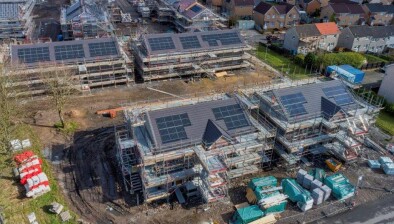Jocelyne Fleming: Getting HEETSAs right - why we need systems thinking, not siloed approaches

Jocelyne Fleming
Recent proposals from the Scottish Government for Home Energy Efficiency Technical Suitability Assessments, or HEETSAs, while promising, once again underscore the importance of joined-up thinking in achieving retrofit goals, writes Jocelyne Fleming, policy lead – Scotland at the CIOB.
I might sound like a broken record, but when it comes to retrofit, we simply cannot keep thinking in silos. Every tool, every policy, and every programme interacts with and affects others, and if we don’t take a system-wide approach, we risk hindering their collective impact.
HEETSAs have the potential to give homeowners and landlords clear, reliable advice, helping to avoid poorly planned or unsuitable retrofit work. That in itself is a step forward. But these assessments and the wider programme don’t exist in a vacuum.
If implemented at scale, as is needed for programme success, HEETSAs will generate demand for skilled professionals. Ensuring we have enough people with the appropriate breadth of skills to undertake these assessments will require clear pathways for training and upskilling, which will take time to develop and implement. Similarly, the ways in which HEETSAs can and should intersect with funding schemes, wider retrofit policies, and data collection initiatives will also need to be explored. Without considering these factors together, we risk adding yet another layer of bureaucracy rather than unlocking real progress.
Scotland’s retrofit challenge is enormous. As one of my social housing research participants noted two years ago, “if we can only do 100 houses a year, and we’ve got 5,000 houses, we’re never going to get there.” Neighbourhood-level retrofit projects offer several benefits: shared construction sites, bulk delivery of materials, and sustained work opportunities, supporting the training and development of local workforces. HEETSAs could support place- and neighbourhood-based retrofit approaches, giving everyone, from homeowners to housing associations, the same clear, tailored advice, but only if integrated into planning at this scale.
Skills and capacity are already under pressure, especially in rural, Highland, and island communities. As the CIOB has argued in our response to the HEETSA consultation, expecting multiple specialists to attend each property to carry out a HEETSA simply isn’t realistic. We believe a single, well-trained professional can deliver a HEETSA if proper upskilling and continued development pathways are in place. Designing and delivering this training, however, will take proactive planning and early and ongoing engagement with professional bodies and training organisations.
Similarly, funding and consumer awareness of HEETSAs will be critical. Previous research from the CIOB showed that for nearly 40% of homeowners in Scotland, affordability is a barrier to energy improvements, and over a third aren’t aware of government grants and schemes designed to help. HEETSA could help give consumers the advice and information they need to inform retrofit works. That said, assessments must be accompanied by accessible funding and clear communications, so households understand the benefit of a HEETSA, how to pay for these assessments, and, crucially, how to cover the costs of the energy efficiency upgrades identified.
The bottom line is this: HEETSA could be a powerful tool to accelerate retrofit at the pace and scale we know is needed to meet Scotland’s fuel poverty, climate change, and decarbonisation targets, but only if we think systemically. That means considering skills, funding, communications, and delivery alongside the design and content of assessments themselves. Introducing HEETSA without joining these dots risks creating a well-intentioned scheme that fails to deliver at scale.
That’s why we will continue to call for long-term, properly resourced strategies that help support a system-wide approach, such as a National Retrofit Delivery Plan and a Skills Action Plan for the construction sector. Every tool, initiative, and assessment interacts with the wider system. If Scotland is to hit its ambitious climate targets, reduce fuel poverty, and improve homes across all tenures, everyone, industry and policymakers across all relevant departments, must work together to ensure the right plans, people, and funding are in place.
HEETSAs are just one part of the puzzle, but with the right system-level planning, they could help Scotland meet its retrofit goals, reduce emissions, and ensure homes are warmer, safer, and more affordable to heat.









